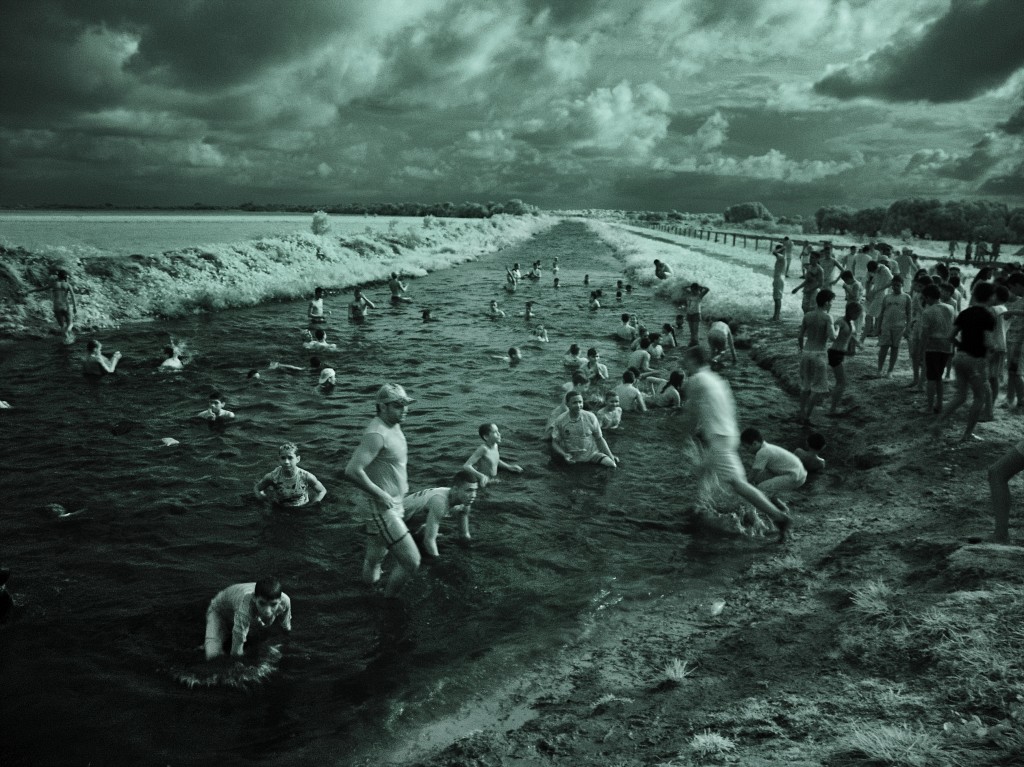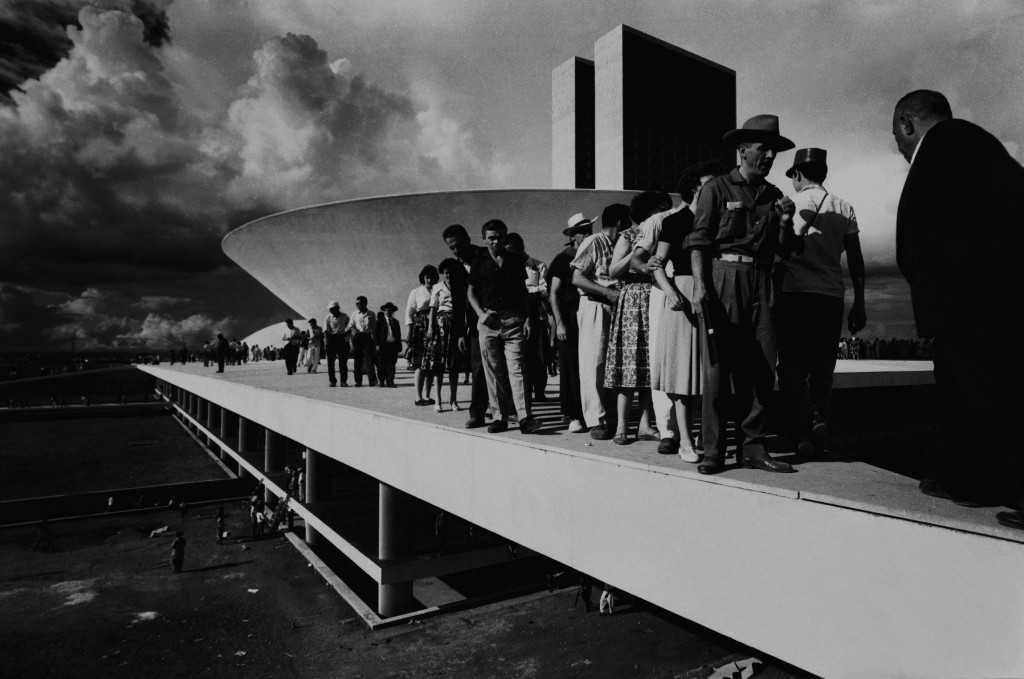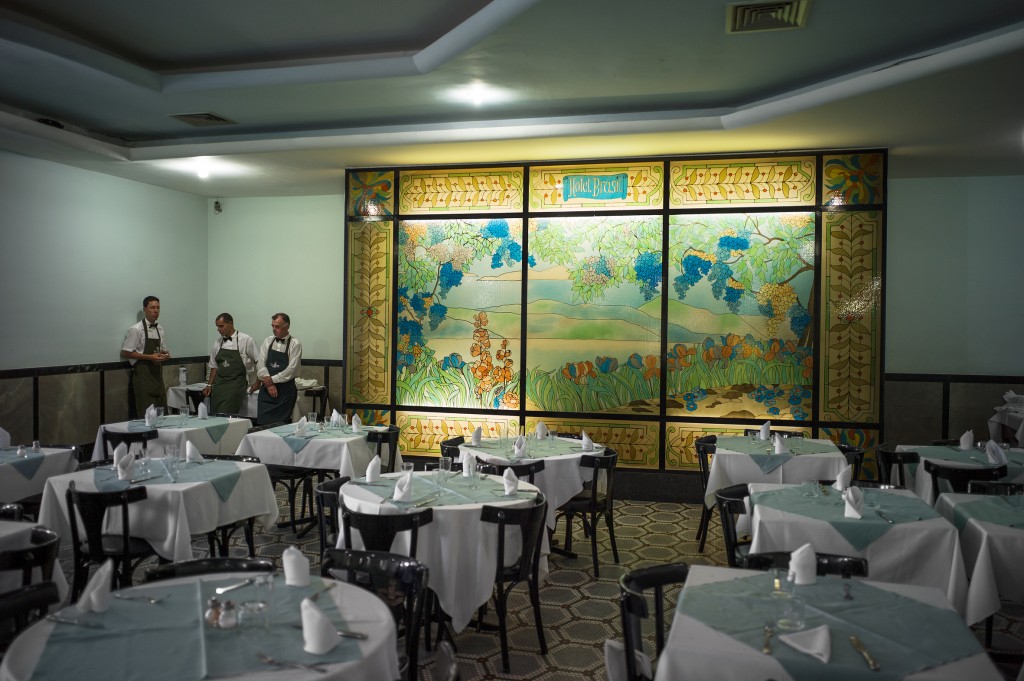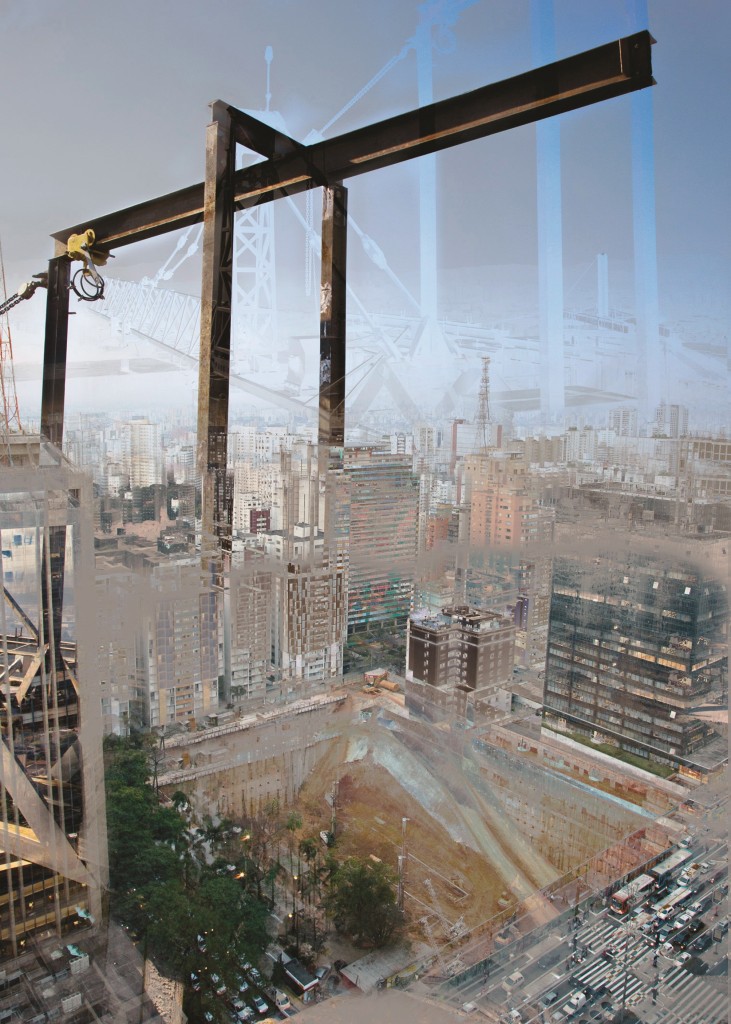Claire Rigby discusses, with Folha arts writer Silas Martí, the difficulty of cutting through visual stereotypes in Brazil, a country which is often too photogenic for its own good. Above, ‘Descansando na Canoa’ (1984) by Luiz Braga, courtesy Galeria da Gávea. Throughout the post and below, other selections from the SP-Arte/Foto fair.
By Claire Rigby
What do you see when you picture Brazil? Football, favelas and goddess-like samba queens? Acres of skyscrapers in shades of white and grey, helicopters flitting about them? Or dense green jungle encroaching on stretches of sand? Visual clichés like these are there for a reason – because they’re part of the truth; but do we need to be a little more choosy about what we let into our mind’s eyes?
Too photogenic for its own good, Brazil is all too often objectified, exoticised and even eroticised in photographic images. Take Mario de Janeiro Testino, the Peruvian photographer’s lush book for Taschen, in which lithe, slightly dressed young beauties drape themselves all over Ipanema and each other; or every football-on-the-beach image you’ve ever seen, where muscular youths run, play, sweat in the sand. Skin glows, the sun beats down, people smile.
The way Brazil is seen from abroad – or to be more precise, the way the country and its people are depicted by foreign photographers – was the subject of a polemic published last week in Folha’s Illustrada supplement by the arts writer Silas Martí. Focusing on a major series of images, The New Brazil by Noor, a photography agency based in Amsterdam, Martí’s think-piece was entitled ‘Para inglês ver’ – literally, ‘for the English to see’, but better translated as ‘for appearances’ sake’. In it, Martí criticised Noor’s images – the result of a set of interlinked assignments by the collective’s photographers, arranged into themes including ‘São Paulo rising’, ‘The power of women’, ‘Brazil’s new middle class’, and ‘Salvador da Bahia’ – for what he saw as their typically clichéd, one-dimensional take on Brazil. Including images by a number of other foreign photographers alongside Noor in his critique, Martí writes, ‘Beautiful bodies glowing on the beach, favelas pacified to the sound of batidão funk, and glimpses of aestheticised misery dominate recent essays by foreign photographers attempting to document the country in times of euphoria.’
He singles out a handful of photos: a man gazing out over the shanty-town, wings tattooed on his back; funk-lovers drinking beer; boys playing football outside favela-chic shacks. Brazil-watchers, like Brazilians, will have seen hundreds of such images – they form an inescapable part of the visual discourse purporting to explain what the country is all about. But as an attempt to try and decipher Brazil for the outside world, the Noor images are arguably both as successful and as flawed as any other attempt to sum up the unencompassable complexity of the country – whether in images or in text. It’s a problem that not only photographers but also journalists writing about Brazil, or indeed about anything else, face every day of the week: that of filtering and distilling complex subjects, and absorbing and deciphering signs to present them to readers in a digestible, palatable form.
A guest post by Mauricio Savarese here on From Brazil this week, Why is Brazil important?, touches on some of the same problems: Brazil’s image abroad, the interest Brazil awakens in those curious to understand more about it, and the level of detail, complexity and attention they are prepared to invest in doing so.

For Martí, even the Mexican photographer Carlos Cazalis’s cold-toned images of São Paulo don’t pass muster: ‘Even when the scenario is different, and the softness of Rio gives way to paulistano chaos, exaggerations prevail that disturb the more critical eye.’ As one of Folha’s leading art critics, it’s fair to say that Martí has a better – and a more critical – eye than most. He allows, in the words of one of his interviewees, for the fact that visual clichés of the kinds he discerns in the Noor images are also reproduced – internalised, perhaps – by Brazilian photographers: ‘Certain clichés are connected to our inner vision of the country,’ says Boris Kossoy, a photographer and professor at the University of São Paulo (USP). ‘It’s an opportunistic point of view, or a colonised repetition of what people want to see abroad. It’s exotic content for the consumption of idiots.’
I emailed Silas to ask whether there were Brazilian photographers he thought were doing a better job of portraying Brazil. ‘It’s tricky,’ he wrote back: ‘I don’t feel up to speed with the work of all the photojournalists working at the moment. And although there are lots of photographers whose work I love doing interesting things, they’re not necessarily focused on looking at Brazil in particular. Some of my favourites, though, are João Castilho, Rodrigo Braga and Luiz Braga, and I like some of the things Cia. de Photo does. But you’d have to be careful not to classify these works as journalistic, since their pretensions are more artistic, and not always documentary. Even so, I’d say that these photographers, using some of fiction’s strategies, are registering a Brazil that’s more real in some aspects.’
Leaving him to have the last word – and taking up his implied suggestion of looking to art for the kind of insight that encapsulates complexity without flattening it out – scroll on for more works from last week’s SP-Arte/Foto fair, including some of the Brazil-focused works that seem to slip between the artistic and the documentary.







